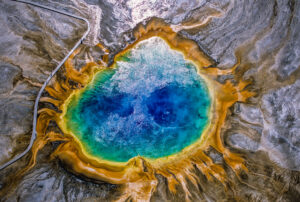
Introduction to Tom Murphy’s book The Comfort of Autumn
Autumn is the season of completion. It is the end of the annual growth of many plants and the fruition and death of many more. It signals the transition to the dormancy of winter and surrounds animals in a comforting time of warmth and abundance. Beautiful forms have the same life in every season, so the deaths are not tragic if they contribute to the next generation’s vitality.
Annual plants should have grown and produced a surplus of seeds by autumn to have fulfilled their place in the community of life. Perennials should have survived with enough strength left to carry them through the coming winter. Ideally they should have produced seeds and strengthened their root systems, stems and branches.
In the furious push to grow and reproduce, the engines of life in green plants are driven by the surge of chlorophyll. Underneath this green all along is the color of the basic structure of the leaves. Only after the completion of this growth and the overpowering green mask of chlorophyll evaporates are leaves true colors revealed.
Most insects have laid eggs or entered into a larval stage in autumn to carry their species through the winter. The multitudes from summer which are left after the reproductive cycle is completed, will mostly die.
There are many ways for animals to succeed. They may prepare for hibernation, and accumulate fat reserves, they may store food in secure places for future winter consumption, or they may migrate away from their summer range. This migration may be only a few miles to higher or lower elevations, or it may be thousands of miles, even to Central or South America.
Most birds and mammals eat as much food as they can, in a survival response called hyperphasia. This accumulation of fat hopefully gives them the reserve energy to migrate, hibernate or endure. Some store food in caches to be assured of adequate nutrition over the winter. Beaver cache branches under water, Clark’s nutcrackers hide pine nuts in the ground, Pika build haystacks in talus slopes, and squirrels store a variety of food items from mushrooms to seeds in trees and underground.
Winter hibernation is an autumn activity as well because all the vital preparation must be done then. Bears hibernate and take their young cubs with them. Marmots, chipmunks and others hibernate, but the young are not snuggled and helped the next spring. Den location and preparation must be accomplished well before winter sets in. Much of the lush vegetation that grew all spring, summer, and autumn is available in autumn. The winter sleep of hibernation is anticlimactic. I suspect winter dreams during hibernation are those of the plenty in the perfect days of autumn.
Young animals achieve a new independence in autumn. Juvenile elk, coyote, and otter are a few of the creatures that are weaned from their mother’s milk and have to acquire their own food, but they stay with either their mother or with other adults to learn how to survive winter. The autumn transition of total dependence to total independence or group interdependence is a critical learning stage in these animals’ success.
The beginnings of independence are most evident in birds and predators. Some birds are entirely on their own a few weeks after they leave the nest. Their mortality rates are high because they are naive about the many risks of life. The bright and the lucky will live. Some birds stay near the adults and learn to migrate or learn how to hunt in the forgiving lushness of autumn.
It is fun to watch these juveniles learning the possibilities of our big, complex world. I have watched a young coyote puzzling over how to dig out a ground squirrel. I have seen wolf pups chase four bull elk and then realize elk can be dangerous when the bulls spin around with multi-pointed antlers and start to chase them back.
For predators there are many awkward and potentially injurious misses while pursuing food. If an individual doesn’t learn quickly enough to be a successful hunter, autumn will be its last season. High mortality rates come in the first days or months after they separate from their mothers when they separate in autumn.
For most adults it is the end of their responsibilities as parents and a time to rest, recuperate, and to put on weight and regain their strength for winter. It is a time of relaxation. This is when most animals achieve their maximum health and strength, so they look their best. They are fat, strong, fast and sleek.
There is a delicate lightness in each individual life in relationship to the whole universe, yet each unique life contributes something important to the unified force of all existence. Autumn is the season when life can be at rest in comfortable peace in life’s constantly spinning push to appear and grow. It is a time when the earth can take a deep breath and show off its colors, when the bison cow can play as she did when she was a calf.
Tom Murphy
